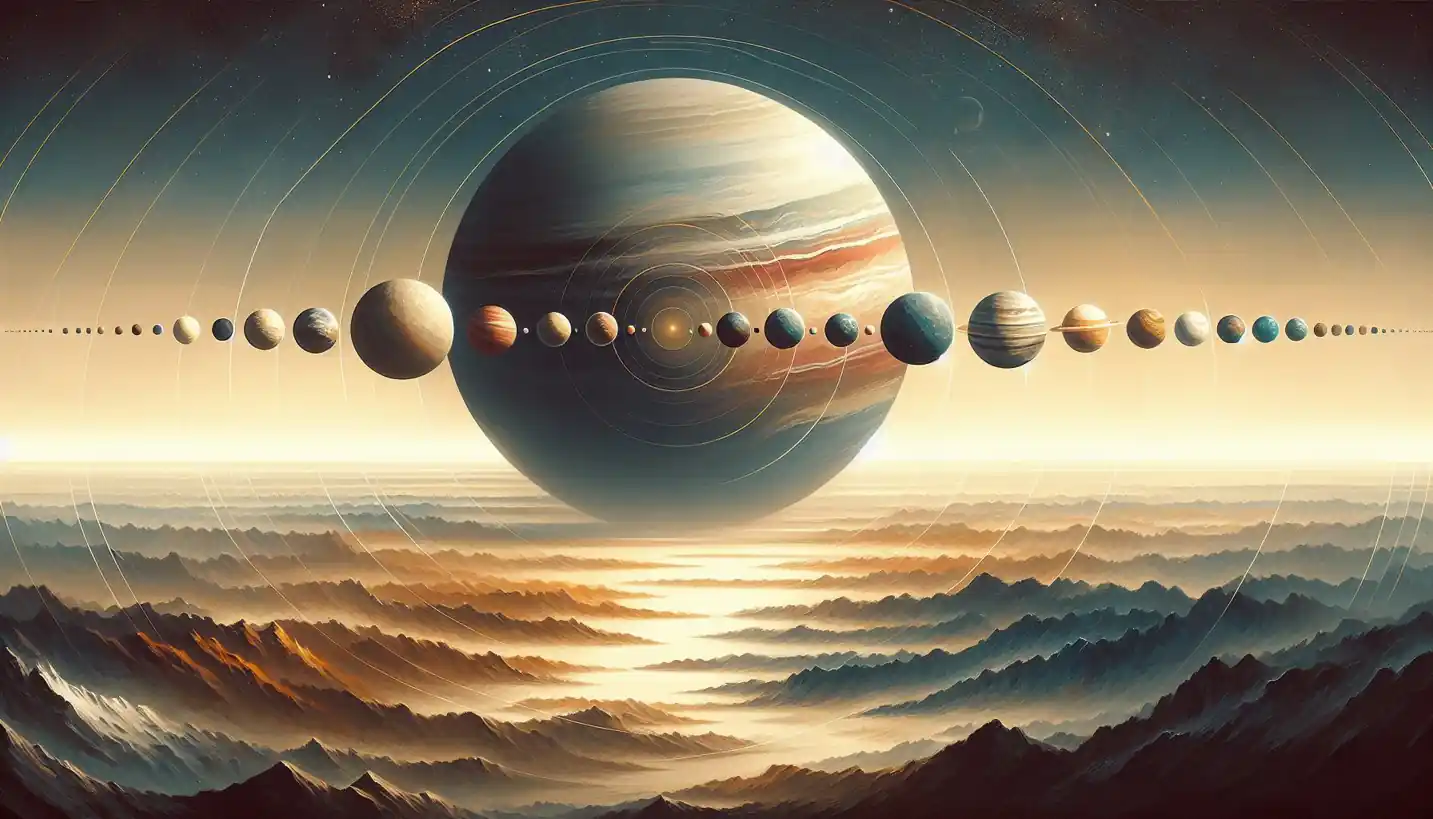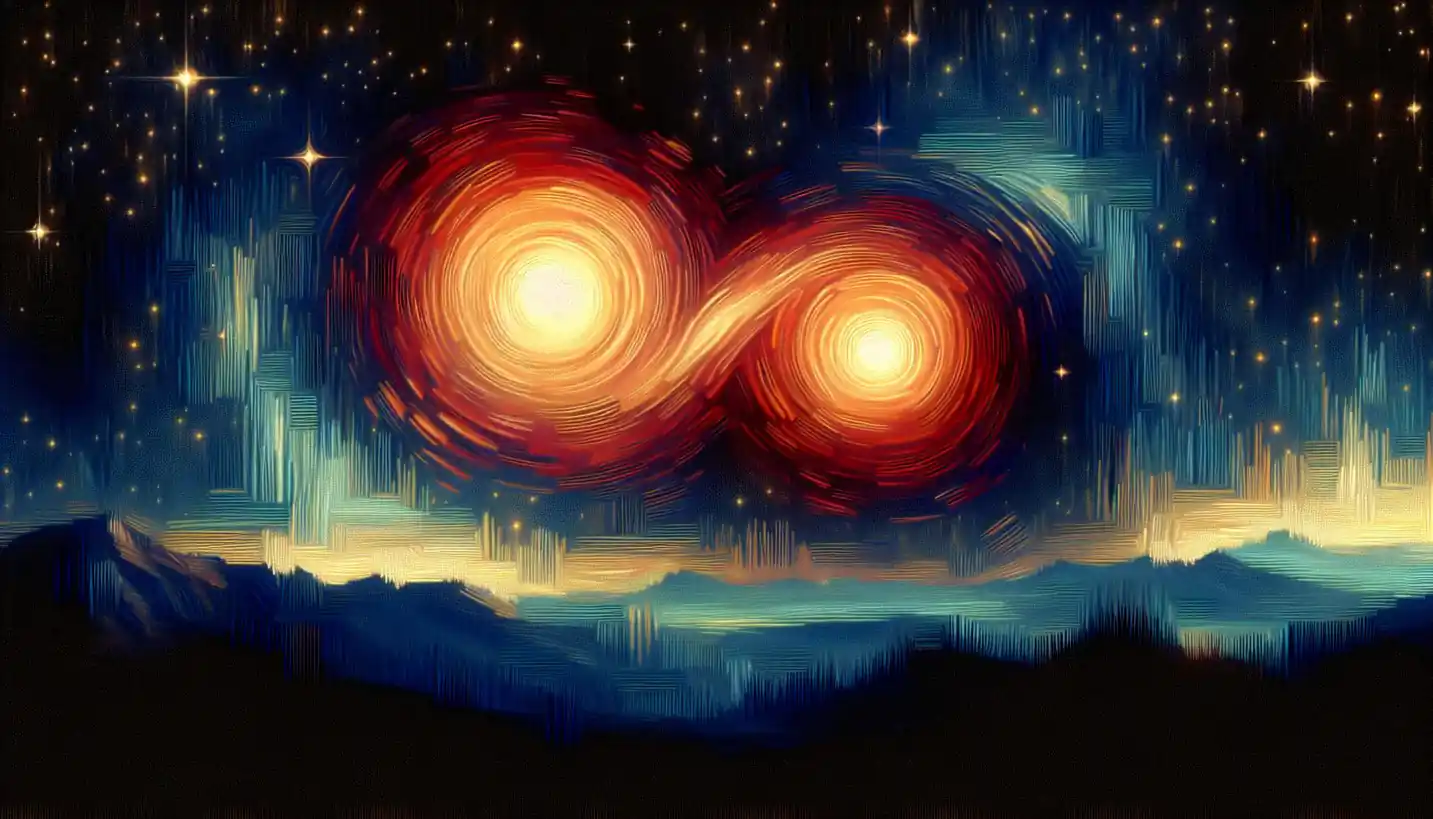· Astronomy · 4 min read
Dark Energy: Unlocking the Secrets of a Mysterious Force
Dark energy, a puzzling force, accelerates the universe's expansion. Delve into the secrets of this mysterious power shaping cosmic evolution.

Whispers of a cosmic mystery have intrigued astronomers for decades. This enigmatic force is called dark energy, and it’s thought to be the key to the accelerated expansion of our universe. But what is it, really?
What Is Dark Energy?
Dark energy, a term that might sound like a supervillain’s lair, is a mysterious and invisible substance. It makes up about 68% of the universe. Unlike the stars we see twinkling in the night sky or the planets in our solar system, dark energy doesn’t emit light or heat. Instead, its presence is known largely through its effects on the expansion of the universe.
The Discovery of Cosmic Expansion
Our journey into understanding dark energy began with a discovery by Edwin Hubble in the 1920s. Observing the light from distant galaxies, Hubble found that they were moving away from us, and the more distant a galaxy, the faster it seemed to recede. This led to the revolutionary idea that the universe is expanding.
Enter Dark Energy
For a while, astronomers believed that gravity should eventually slow down this expansion. However, in the late 1990s, two separate teams of scientists observed distant supernovae and found something astonishing. Instead of slowing down, the expansion of the universe was speeding up. To explain this unexpected acceleration, scientists proposed the existence of dark energy.
Theoretical Models of Dark Energy
There are several hypotheses about what dark energy might be. One popular theory is the cosmological constant, originally proposed by Albert Einstein. Einstein introduced this constant to make his equations of general relativity align with a static universe. When the universe was discovered to be expanding, he dismissed it. However, it was later reintroduced to explain dark energy’s effects.
Another theory involves a dynamic energy field called “quintessence.” Unlike the cosmological constant, which is unchanging, quintessence could change over time. Scientists are still trying to figure out which model, if either, is correct.
Why Does Dark Energy Matter?
Understanding dark energy is crucial because it shapes the fate of our universe. If it continues to drive the acceleration, galaxies will drift further apart, potentially leading to a “Big Freeze.” In this scenario, stars will burn out, and galaxies will grow dim, casting the universe into eternal darkness. Alternatively, some models propose a “Big Rip,” where the universe would eventually tear itself apart at the atomic level.
How Do We Study Dark Energy?
Studying something invisible like dark energy is no small feat. Astronomers use powerful telescopes and complex tools to measure the universe’s expansion. The Hubble Space Telescope and ground-based observatories have been pivotal in this research. Researchers also rely on cosmic microwave background radiation, the afterglow of the Big Bang, to gather clues.
Future missions, like the upcoming Nancy Grace Roman Space Telescope, aim to shed more light on dark energy’s nature. These projects help piece together the universe’s history and its ultimate fate.
Dark Energy’s Connection to Dark Matter
Dark energy often gets confused with dark matter since both are invisible and poorly understood. However, they are vastly different. Dark matter, making up about 27% of the universe, is another mysterious component. Unlike dark energy, dark matter exerts gravitational pull, acting as a cosmic glue that holds galaxies together.
Together, dark matter and dark energy account for a staggering 95% of the universe, leaving only a small fraction of everything we observe as normal matter. This revelation challenges our understanding and invites further exploration into what makes up existence itself.
The Future of Dark Energy Research
Current and future efforts to understand dark energy involve collaborations between countries and institutions. These include surveys like the Dark Energy Survey and the Euclid mission by the European Space Agency, aiming to map out more of the universe and refine our understanding of cosmic expansion.
As technology and methods advance, scientists hope to unravel the mystery of dark energy. Each discovery not only deepens our knowledge of the universe but also poses new questions, teasing the imagination and pushing the boundaries of what we know.
Conclusion: A Journey Beyond the Stars
Dark energy challenges our perception of reality and our understanding of the cosmos. It’s a crucial piece in a grand puzzle that could redefine our view of the universe. As scientists continue to explore this spectral force, their findings may one day transform our grasp of existence itself. Until then, dark energy remains one of the cosmos’s most tantalizing mysteries, inviting us to look further into the night sky with wonder and curiosity.


